
We had a heatwave in Amman last week, with temperatures exceeding 35°C (and hitting 50°C in some parts of the country!) Not the best conditions for visiting ancient ruins. But I did brave the fierce sun one morning, to visit Qasr Mshatta. Ironically, its name translates as “Winter Palace”.
Close to Queen Alia Airport, Qasr Mshatta is one of the “Desert Castles”, a group of early Islamic fortified residences scattered across the empty lands to the east of Amman. It is inaccurate to call them castles; pleasure palaces or hunting lodges might be better descriptions, the luxurious retreats of princes. A driving tour of the Desert Castles comes high up on our list of things to do in Jordan, as much for the desert scenery as the chance to visit these unusual ruins. But it’s an excursion best left for a cooler time of year.
Qasr Mshatta, however, is more accessible, only a short drive from home. It is also one of the largest of the castles. The remains of the 8th-century palace sit within a massive walled enclosure, each side 144m long, and reinforced with 25 round towers. These walls contained an extensive paved courtyard, a mosque, and fountains. It is an exposed, sun-baked place now, but I imagine it was a secluded and verdant oasis in its day.
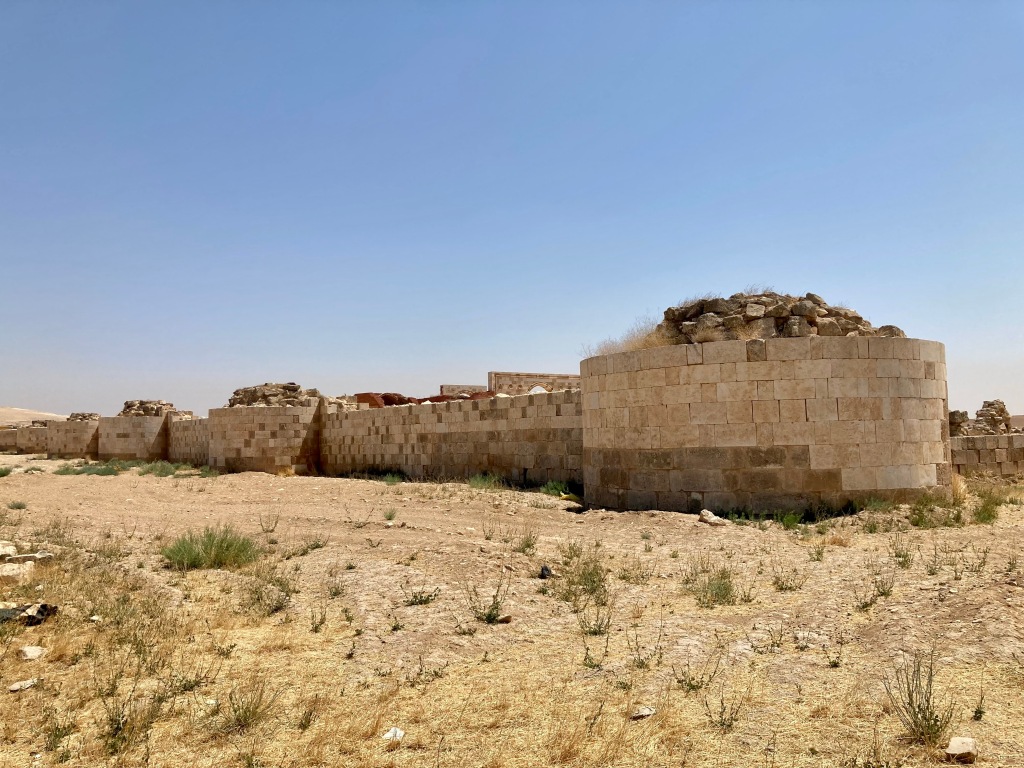
The palace itself is a huge brick structure. It had a grand entrance hall, with a vaulted roof supported by columns. This led to a throne room. Surrounding these ceremonial chambers were residential apartments. Air ducts were concealed within the high ceilings, which allowed a breeze to circulate through the spacious rooms.
The floors of the palace would originally have been covered with mosaics, and the brick walls with ornately carved limestone façades. Fragments of these carvings can be found around the site. The ornamentation consists of intricately interlaced vines and foliage, which exemplify a fusion of eastern and western decorative styles (sometimes described as “arabesque”, though this term is an over-simplification).


For a long time, the ruins boasted a remarkable ornamental façade that extended along the southern gateway. But this was removed in 1903, under orders of the Ottoman Sultan, and given as a gift to Kaiser Wilhelm II in gratitude for German technical expertise in the building of the Hejaz railway. You have to go to the Museum of Islamic Art in Berlin to see it now.
Qasr Mshatta must have been an impressive edifice. But it was never completed. Evidence indicates it was built for Walid ibn Yazid, one of the last of the Umayyad caliphs. His reign was short, lasting just over a year, 743 to 744, and culminated in his assassination. It would seem the fall of the caliph also brought an end to the building work on his sumptuous palace. An earthquake in the 9th century then destroyed the parts that had been completed.
“Umayyad” is a word that crops up frequently in Jordanian archaeology. The Umayyads were a dynasty of caliphs who are credited with consolidating and greatly expanding the early Muslim empire. They came to power in 661, just 29 years after the death of the Prophet Mohammed. Through a series of conquests, they carved out a vast domain, stretching from Spain in the West to the River Indus in the East. Taxes and tribute poured in from across the empire to their capital, Damascus, and made the caliphs and their court immensely wealthy. They were great builders, and their legacy survives in their architecture: magnificent mosques, such as the Great Mosque at Damascus, and palaces, including Qasr Mshatta and the other Desert Castles. Jordan’s location, close to the centre of Umayyad power and crossed by the pilgrimage routes from Syria to Mecca and Medina means it is particularly rich in Umayyad heritage.
The Umayyad rulers were wealthy and powerful, but over time they became decadent. They were criticised for being more interested in earthly pleasures – wine, women, and song – than in upholding Islamic morals. In 750, the Umayyads were overthrown in a revolution by a new dynasty of caliphs, the Abbasids, who brought with them a stricter interpretation of Islam.
Qasr Mshatta, the “Winter Palace”, belongs to the end of the Umayyad era, when their light was failing. It speaks of a culture of excess – of rulers who thought they could awe their subjects with enormous and lavishly decorated buildings. But their opulent and sinful lifestyles attracted resentment, rather than respect. Walid ibn Yazid, the caliph who had Qasr Mshatta built, preferred to live a playboy lifestyle in his desert palaces, instead of attending to matters of state. He died at the hands of his own men.
In the Jordan Archaeological Museum there is a broken statue that was found at Qasr Mshatta. It is the lower part of the torso of a semi-naked female figure, possibly a dancer. Was the palace adorned with many statues like this? Sexy ladies, to arouse the passions of the caliph and his entourage? It is a rare surviving trace of the hedonistic culture of those who dwelt at Qasr Mshatta.

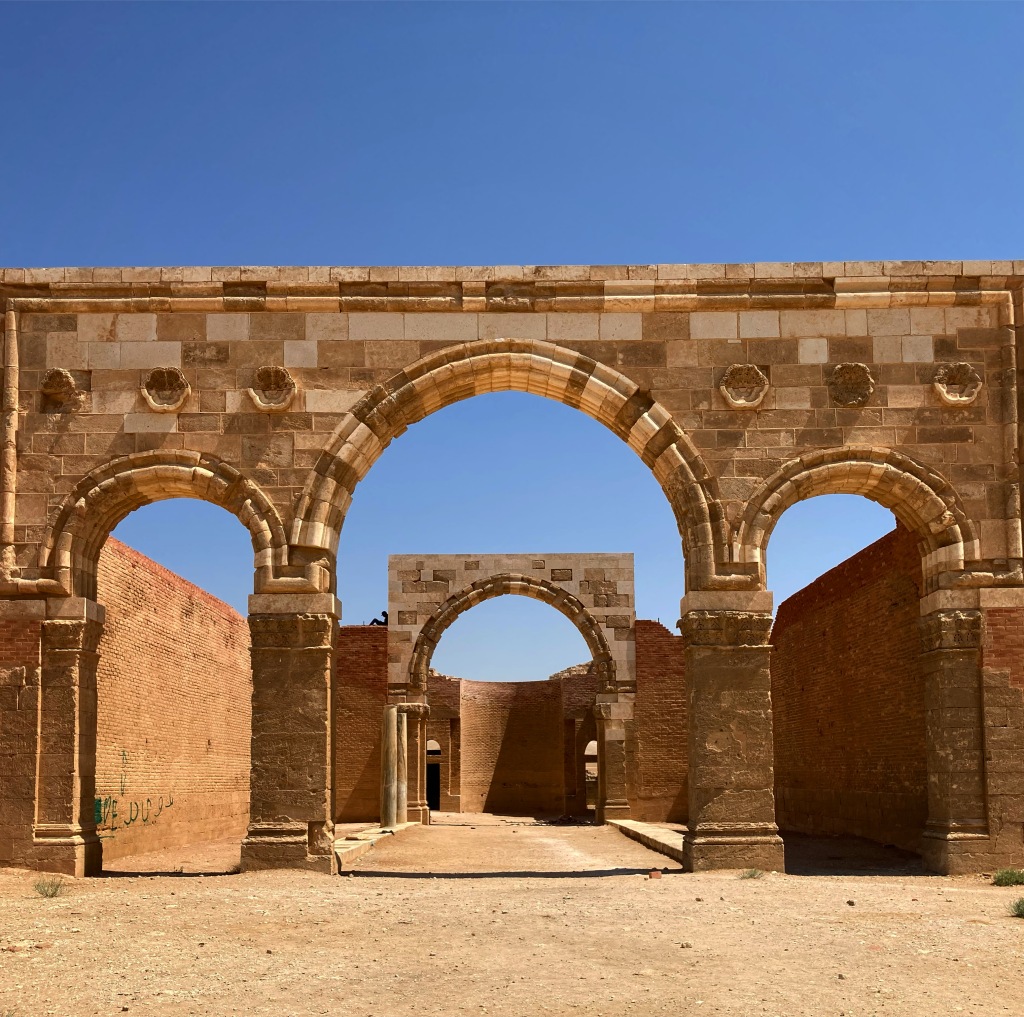
On my way back to Amman, I stopped to visit the ruin of another Umayyad palace, Qasr Qastal. It is just off the main road from the airport, but is a sadly neglected place. Like many archaeological sites in Jordan, it is “undeveloped for tourism”, which means the ruins are unprotected, there are no facilities, and no information. But on the plus side, it is easy to park, and you can freely wander about the ruins.

Qasr Qastal has been tentatively listed by UNESCO, because it is one of the oldest and most complete surviving Umayyad residential complexes anywhere in the Middle East. The name “Qastal”, probably relates to the Latin word “castellum”, suggesting it might have been built over a Roman fort. The palace is thought to date from the last two decades of the 7th century. It was inhabited throughout the Umayyad period, into the Abbasid period, until maybe as late as the 10th century.
What did I find there? Like Qasr Mshatta, Qasr Qastal was enclosed by a square defensive wall, with semi-circular towers. Within the walls is a paved courtyard surrounded by buildings, some still largely intact, with doorways, windows, and staircases. And beneath the buildings are cavernous underground chambers – presumably water cisterns (water management has always been an important consideration around here).
Like the other Umayyad palaces, Qasr Qastal was once richly decorated with ornamental stonework and mosaic floors. Archaeologists have clearly done some work on the site because many of the blocks of stonework have been laid out in a grid pattern, like a puzzle waiting to be put back together.
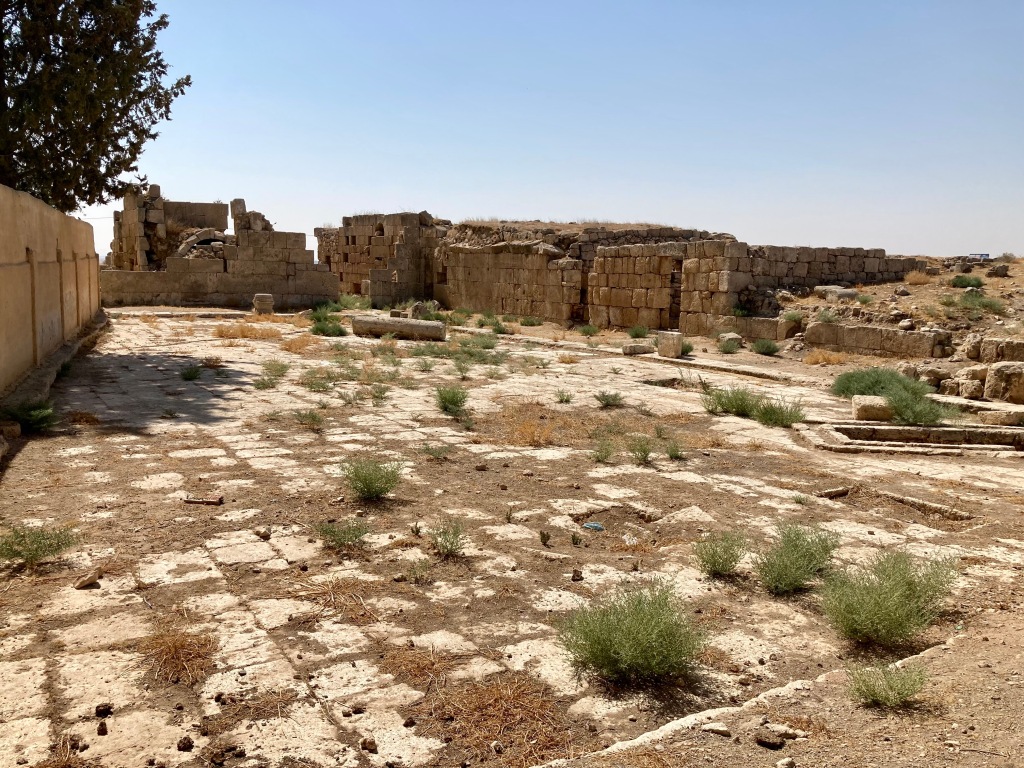
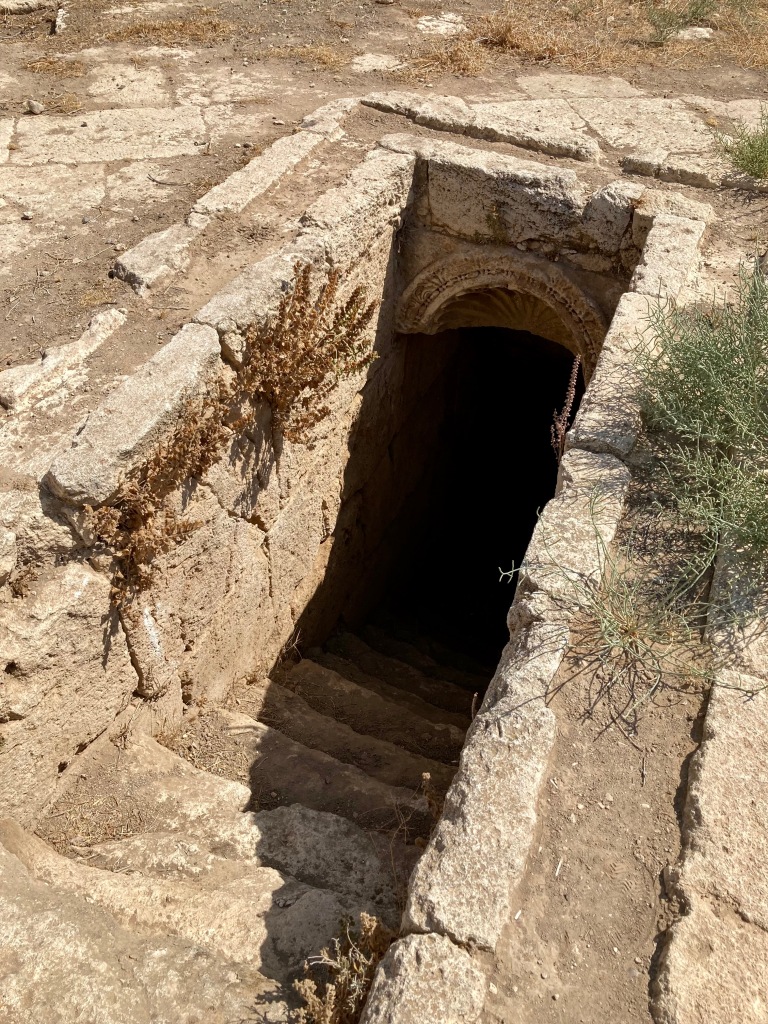
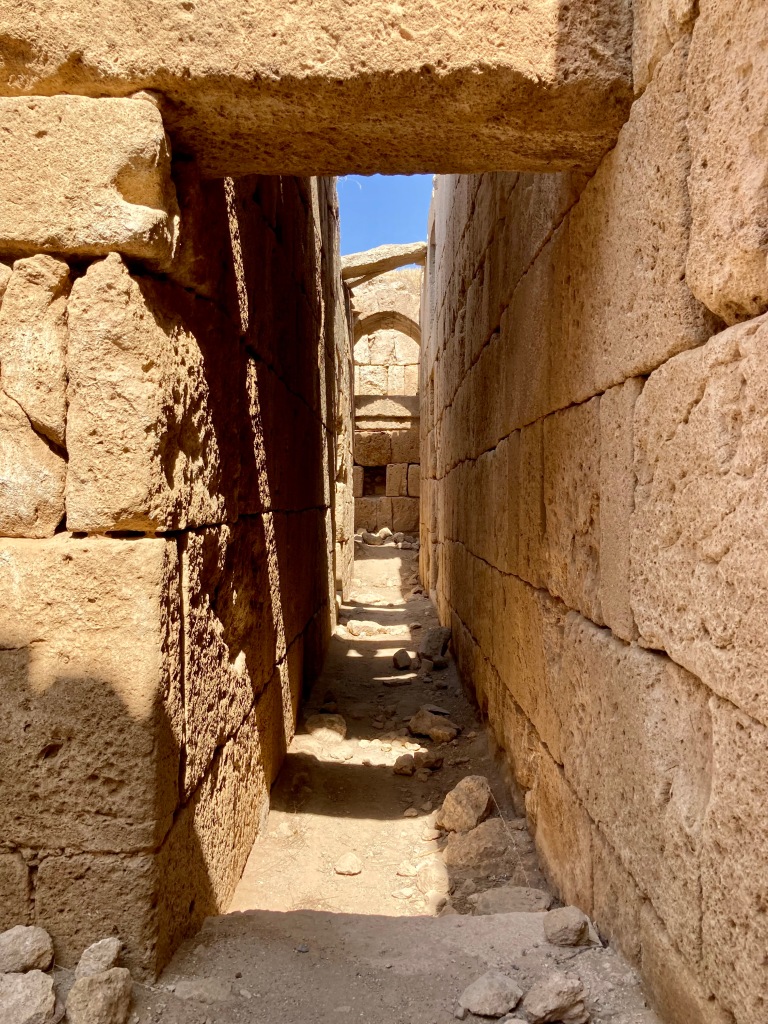

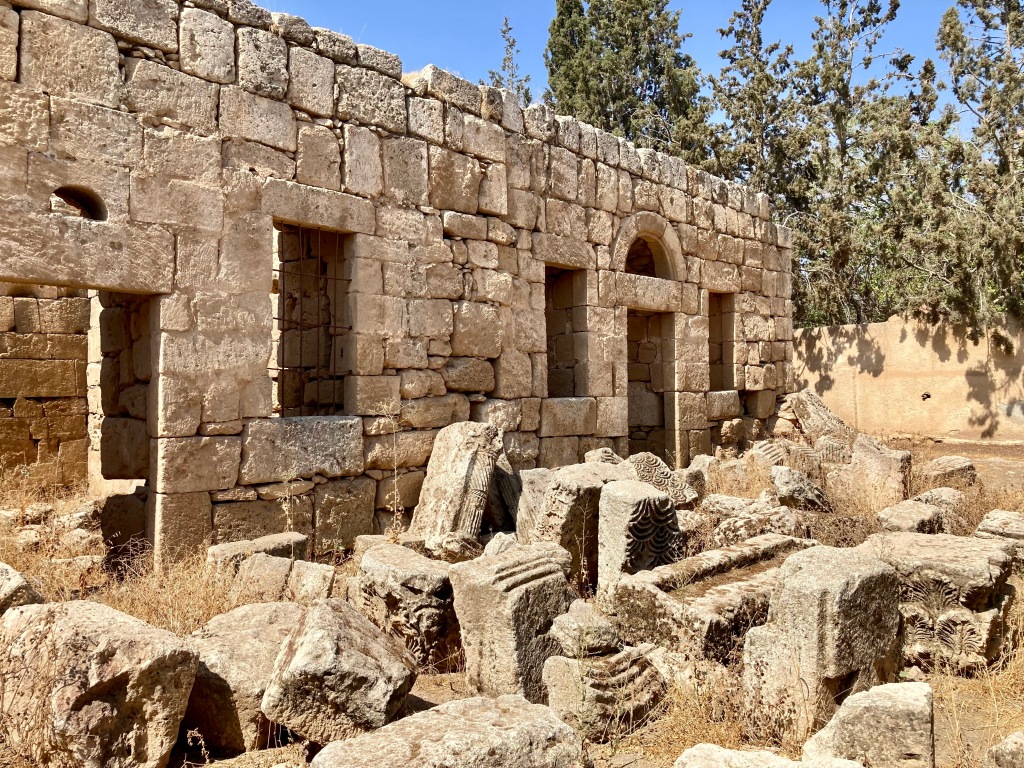
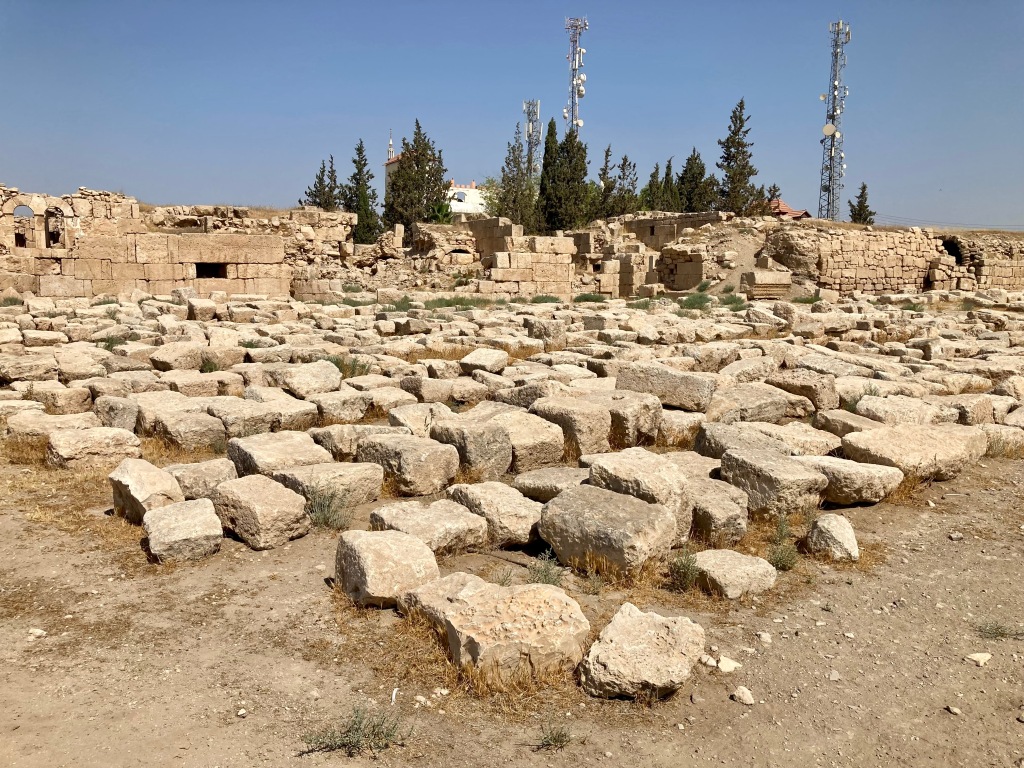
Not far from the palace ruins is an ancient mosque, which from the outside looks little more than a stone bunker (it is still in use, and locked, so I couldn’t go inside). Unusually, the mosque is oriented towards Petra rather than Mecca. A circular stone tower near the mosque is significant because it is one of the earliest minarets anywhere in the world.
Wikipedia tells a sorry tale: “a portion of the palace has been covered by a modern house owned by a powerful clan who appropriated much of the site and used architectural elements of the qasr as decoration.” There is indeed an ugly modern house here, but whoever the “powerful clan” were, their fortunes seem to have faded, because the house is now semi-derelict. Maybe, like the Umayyads, they grew too wealthy for their own good.
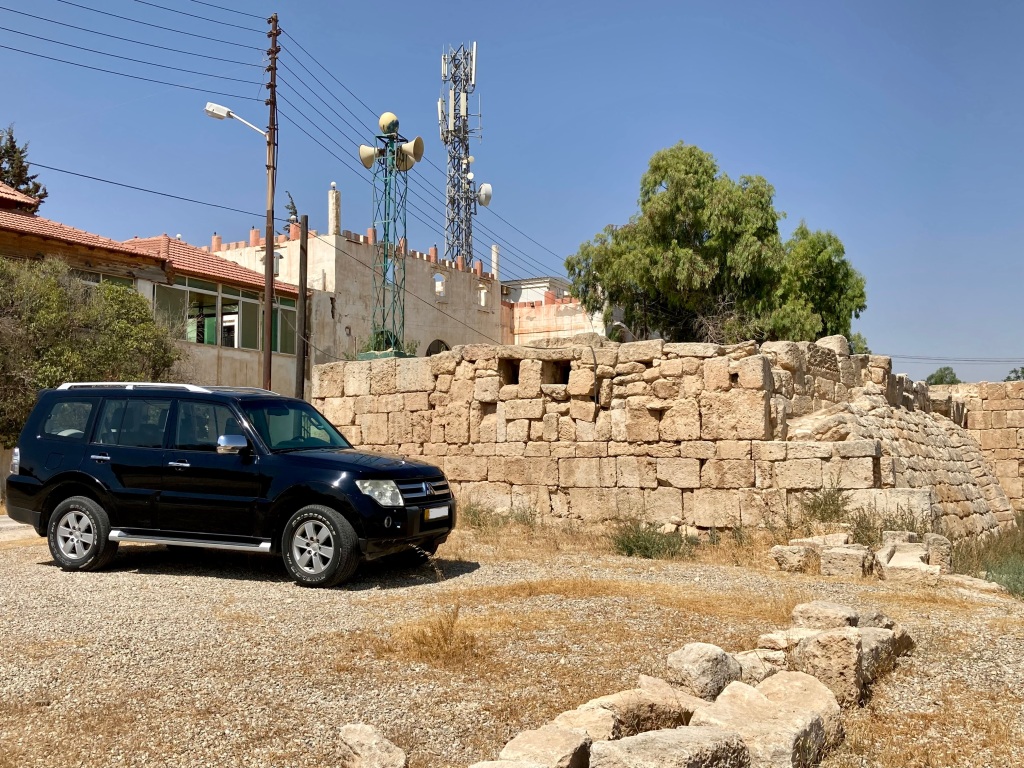
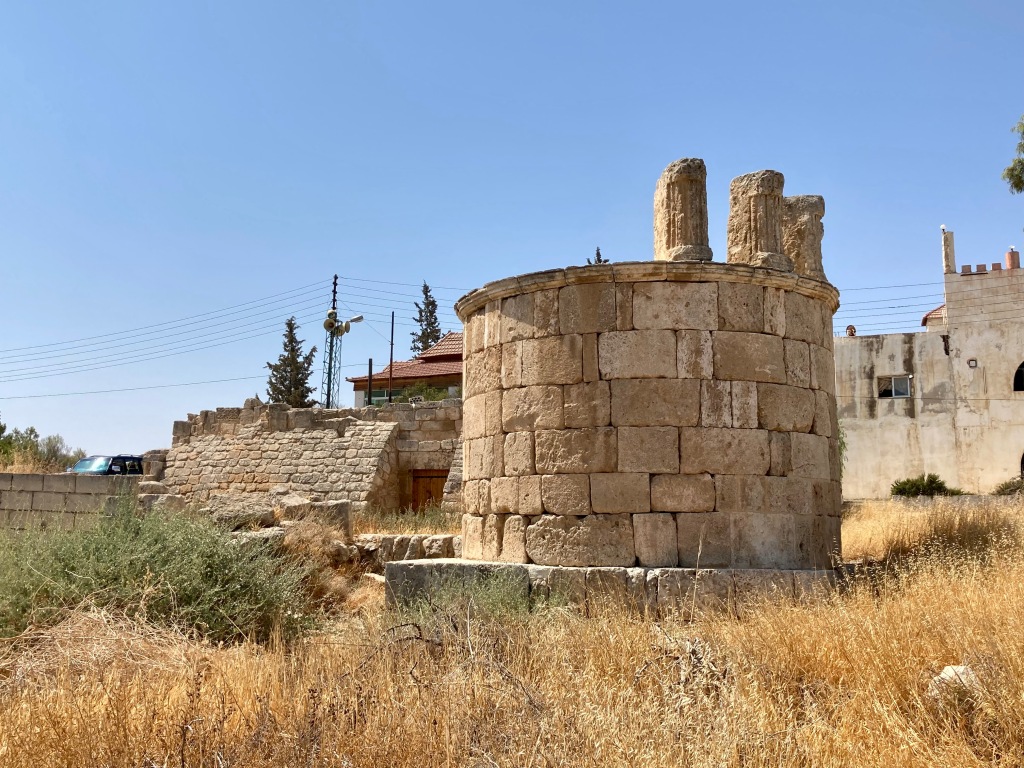


2 thoughts on “Qasr Mshatta – the Winter Palace”